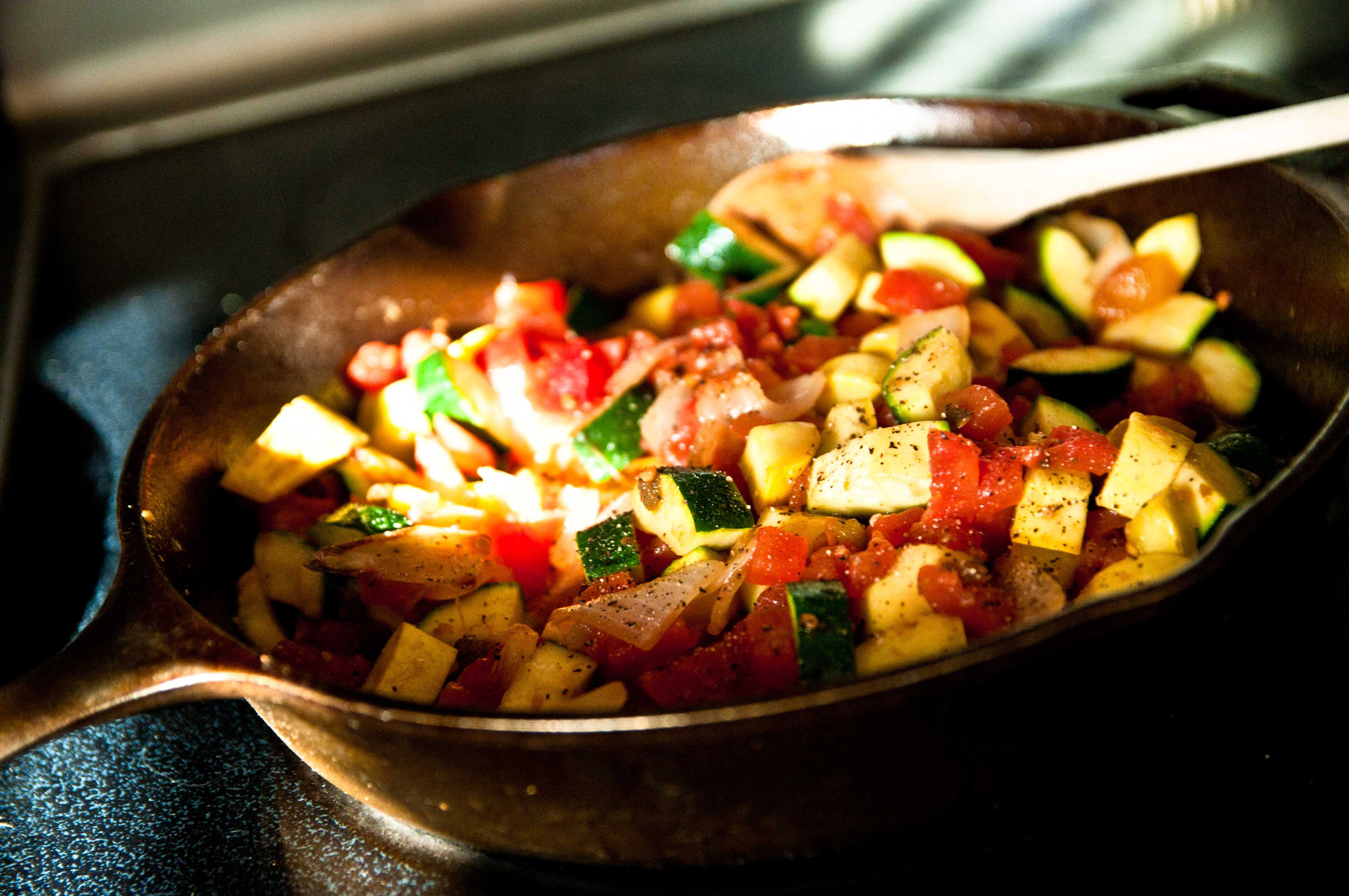NOTE: This story was originally published on November 28, 2016
Skillets and pans with non-stick coatings, like Teflon, have had a prime place in American kitchens for decades—and for good reason. They make it a cinch to flip pancakes and slide omelettes onto our plates. But some consumers have worries about the safety of the chemicals used to make non-stick coatings.
We reached out to chef and author Jack Bishop for some ideas on how to manage these concerns and get the best results in the kitchen with alternatives to non-stick cookware. Bishop is also the chief creative officer at America’s Test Kitchen, where they review recipes and cookware.
LISTEN: Goodbye, Non-Stick. Hello, Cast Iron.
First, if you have a pan with a non-stick coating in your kitchen, Bishop says there are a couple of things that will reduce your risks.
1. If the coating is peeling, replace the pan. Bishop says you don’t want the non-stick coating peeling off into your food. These pans have a pretty short lifespan.
2. Always put fat in the pan FIRST, before you turn on the heat. The manufacturers of these types of pans typically instruct that you don’t overheat the pan, or it will release fumes that Bishop says can cause flulike symptoms. The fat will melt at a lower temperature than the 500 degrees at which the pan will overheat.
3. Never put a Teflon or similar non-stick pan into the broiler. It’s too hot and the pan will, again, release those fumes.
You may have seen the GreenPan or similarly marketed non-stick pans made with a ceramic lining at stores or online. Bishop says they don’t have the same concerns as pans with Teflon-type coatings. Unfortunately, they also don’t perform very well when it comes to keeping food from sticking to the pan’s surface.
If you want to move away from non-stick coatings, Bishop says the original “green,” non-stick pan is the one many of our grandmothers used—cast iron. He says sales are up, and it’s easy to see why. They’re inexpensive, but they last a lifetime They’re versatile—you can sear a steak, bake bread or cook a chicken in one. And with proper seasoning, a cast iron skillet is non-stick enough to cook and release the perfect fried egg.
But like a Gremlin, cast iron has special instructions for care:
1. Don’t soak it.
2. Never put it in the dishwasher.
3. Don’t scrub it with harsh abrasives.
4. Don’t cook acidic foods in it for long periods of time. (Think a long-simmering tomato sauce.)
Any of these things will remove the seasoned surface you’ve worked so hard to achieve, which is what makes the pan non-stick in the first place.
Carbon steel, another non-stick alternative, has similar instructions for care. These pans are made from a different combination of carbon and iron, so they’re lighter than cast iron. That’s why they’re a favorite in restaurant kitchens. Carbon steel pans are also affordable, and Bishop says they are up to the tasks that make cast iron a winner—like browning and searing, and providing a non-stick surface to cook eggs and other delicate foods.
Both both cast iron and carbon steel pans must be stored properly or they will rust. Bishop says after washing, make sure pans are dried well before they are put away. Rubbing the dry cooking surface of the clean pan with a little oil helps too.

